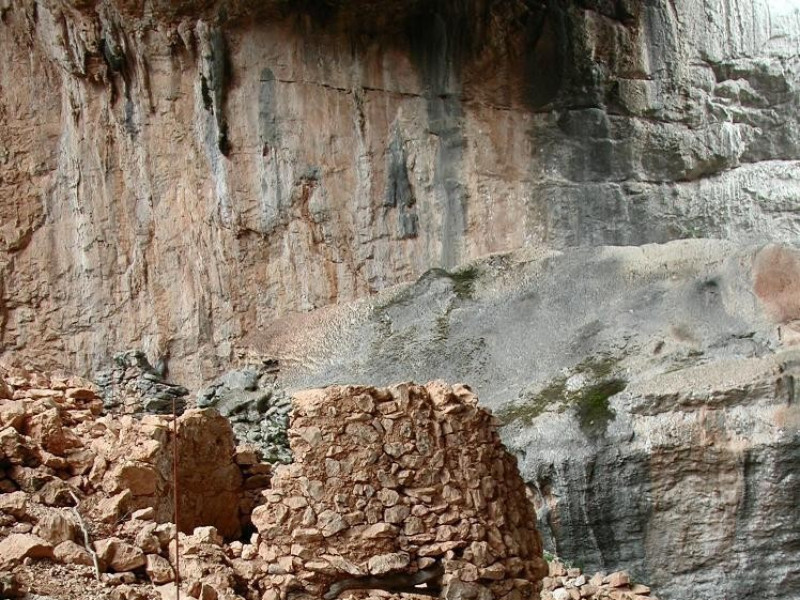Tiscali
The Nuragic settlement rises on the top of the Tiscali Mountain, in Lanaitto valley, a wild place in the region of the Supramonte.
The village of Tiscali is inside an enormous dolina (sinkhole) originated by a tectonic subsidence. Its peculiar building technique is different from the other Nuragic villages. Here the Sardinians used to hide themselves from Punic and Roman conquerors, but it was probably also a holy place for Nuragic people. You enter the site through a wide split in the mountain.
The structures, partly destroyed by land subsidence and acts of vandalism, are divided into two different settlements. The first one, on a steep slope, consists of forty round and elliptical huts; the second one has about thirty smaller rooms leaning on the rock, all quadrangular but one, perhaps used as storehouses or shelter for animals. The walls are built of local rough calcareous stones with clay mortar. Lintels are made of terebinth wood (a resinous shrub typical of this region) or juniper and not of stone as usual. The human presence in the territory dates from the Middle Bronze Age (15th-13th century BC), but the settlement was frequented also during the Roman Age (2nd- 1st century BC).
Not accessible to disabled people.


